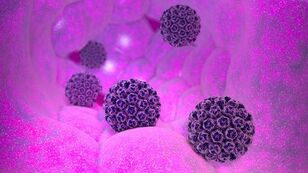
Human papillomavirus (HPV) is a collective term for a group of DNA viruses that spread from person to person and stimulate the development of benign tumors-papilloma. Some breeds are carcinogenic (that is, they increase the risk of malignant tumors). HPV is most commonly associated with cervical cancer, and thousands of women die every year worldwide. However, these viruses also affect the development of other cancers: not only in women, but also in men.
HPV has not been symptomatic for a long time: patients usually only find it when a precancerous condition or cancer develops. HPV threatens patients of any gender and age, including young children. However, its main "target audience" is people aged 15-30: they are sexually active and do not always consider preventive measures. In most cases, HPV is transmitted through sex.In order to prevent the virus from affecting the body so far, it is recommended to check your health regularly: rule out possible pathologies. HPV testing was also performed to detect the presence of cancer-causing strains. Take care of your health now: make appointments and receive doctor consultations at Otradnoye Polyclinic without waiting in line or arranging inconvenient times for you
What is HPV
The human papillomavirus that enters the human body through a small wound of the skin is introduced into the cells of the basal layer of the epithelium. HPV can exist in any layer of the epidermis. However, its reproduction only occurs in the basal layer.The development of the virus is divided into two stages:
- Reproduction-the virus enters the cell without affecting its chromosomes and then reproduces.
- Integrated-HPV is introduced into the genome of infected cells.
The virus transforms cells in the second stage. They began to divide actively and appeared tumor-like forms-papilloma. These are papillary growths protruding from the surface of the skin (hence the name: papilloma-from Latin papilla-nipple and Greek tumor-tumor). The second stage does not always happen. The virus is in the first stage of development and is able to subside (leave the body). However, even if the patient has no pathological changes, he is also a carrier of HPV and can infect other people.
The incubation period can last from 3 weeks to a year. On average, it is 3 months. In some cases, non-genital forms of papilloma appear first, and then tumors appear on the genitals.
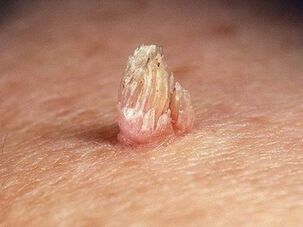
In most cases, the human body can deal with the virus within 2 years. However, the same or different strains may be infected again. Moreover, papilloma or other skin manifestations will subside (decrease gradually, then disappear) after 6-8 months. This happens when the immune system suppresses the virus and allows the virus to "live" from the cell.
HPV virus most often affects the skin and mucous membranes:
- The genital area.
- Upper respiratory tract.
- Oral.
- Bronchus.
- Conclusion.
- The rectum.
- Esophagus.
HPV type
The first human papillomavirus (HPV) was isolated in 1971. Scientist Harald zur Hausen was able to identify and prove the link between HPV and cervical cancer. Subsequently, he won the Nobel Prize for his discovery.
So far, there are about 600 different HPV strains known. Some cause the appearance of warts, others cause genital warts, and others cause papilloma. There are also some types of HPV that affect the development of cancerous tumors. They are called carcinogens. Fortunately, they are not many. They may have low, medium or high carcinogenicity:
- Strains 6, 11, 40, 42, 43, 44, 54, 61, 70, 72, 81 have low carcinogenicity.
- The average carcinogenicity of types 26, 31, 33, 35, 51, 52, 53, 58, and 66.
- is highly carcinogenic in strains 16, 18, 39, 45, 56, 59, 68, 73, and 82.
Cervical cancer is mainly caused by types 16 and 18.
Help!The presence of carcinogenic HPV types in the body does not mean that a person has been "convicted" of cancer. The presence of the virus increases the risk of cancer, but this is not the only reason for its occurrence.If a patient has a cancer-causing HPV strain, he only needs to monitor his health closely and conduct regular preventive checks. If necessary, the doctor will prescribe appropriate treatment for him.
Male and female reproductive systems can be infected with about 40 types of papillomavirus. The result of their activities is not only cancer, but also condyloma acuminata or con tumor.
Help!Cancer tumors develop slowly: within 5-30 years after infection with papillomavirus. They were precancerous (can degenerate into malignant benign tumors). This is why regular preventive inspections are so important. Precancerous diseases and even early cancers can be completely cured, and dangerous consequences can be avoided.
HPV transmission path
The main "condition" of infection is the presence of micro-damages (wounds, cracks, scratches) on the skin or mucous membranes. They are the "gateway" to HPV.
In most cases, the spread of the virus occurs when the skin or mucous membrane of two people comes into contact. Therefore, the main route of papillomavirus is sexual contact. In addition, the use of condoms does not rule out the possibility of infection. The virus can be spread through oral sex, in which case birth control pills are not always used. In addition, condoms cannot cover the entire surface of the penis and are usually worn during sexual intercourse. HPV can also be infected by kissing.
HPV can also be transmitted:
- When the baby passes through the birth canal, from mother to child.
- At home: When using other people's hygiene products (towels, toothbrushes, shaving accessories).
- In public places: sauna, gym, swimming pool.
Help!Papillomavirus has a short survival period in the external environment. Therefore, despite the risk of family infection, it is much lower than the risk of sexual contact.
may also be self-infected: during hair removal, the virus transfers from one part of the body to another, scratching the skin and biting nails.
Virus infection does not occur in all cases. The following factors increase the risk:
- Decreased immunity.
- Bad habits: smoking, alcoholism.
- Stress.
- Sexually transmitted infections.
- Urinary system diseases.
- Damage to skin and mucous membranes.
- Immune deficiency status.
- Long-term use of hormonal contraceptives.
Help!Cancer-causing HPV strains are more harmful to women than men because they are more susceptible to infection.
HPV: Symptoms
The papilloma virus has absolutely no symptoms for a long time. Usually, patients have learned about the existence of HPV and the development of its consequences: the appearance of warts, papillomas, and genital warts. In some cases, the following signs may indicate a virus:
- Redness, skin growth (most commonly in the genital area);
- Itching.
- Pain and other discomfort during or after intercourse.
What diseases can HPV cause?
First of all, the papillomavirus causes the growth of papilloma, warts and genital warts in men and women. All of the above tumors can occur in any part of the body. However, they usually affect the genitals and anal area. In women, they occur in the vulva, cervix and vagina. In men-scrotum, head of penis, foreskin. In male and female patients, tumors often appear in the anus.
Moreover, warts often appear on the soles, throat, and vocal cords. Papillomas (flesh-colored papillomas) have no "places to like"-they can appear on the trunk, neck, face, arms and legs. In children and adolescents, flat warts are the most common (they are also called adolescents or juveniles). These are small (3-5 mm) dark tumors that protrude above the surface of the skin. They are most commonly found on the hands, face, and the back of the legs.
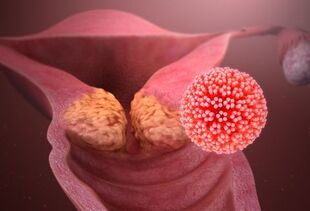
As for cancer, most patients are related to HPV, the first is cervical cancer. Indeed, this pathology is common in our time. However, in women, HPV often causes the development of vaginal and vulvar cancer (65-70% of cases), and in men, penile cancer (50% of cases) also causes cancer. Also in men and women, papillomavirus can also cause malignant tumors:
- rectum;
- Oral;
- Throat.
Generally, in children, HPV is manifested as the growth of papilloma, and its background is a decline in immunity caused by previous diseases (usually viral or bacterial infections). Moreover, papillomavirus infection infects young patients who have allergic reactions or often catch colds.
HPV and pregnancy
Papillomavirus has a negative impact on women's fertility. If it does, the probability of pregnancy is halved because HPV interferes with the implantation of the fertilized egg. If the partner is also infected with the virus (which occurs in 65-70% of the cases), the probability of conception will be further reduced. HPV has a negative effect on sperm motility.
During pregnancy, the papillomavirus increases the risk of breast cancer:
- Polyhydramnios or too much amniotic fluid.
- Chronic placental insufficiency.
- HPV can also cause miscarriage.
Therefore, prescribing modest medications for pregnant women can significantly reduce all the above risks.
When the child passes through the birth canal, there is a risk of infection. Therefore, it is best for HPV women to give birth by cesarean section-the risk of virus transmission is reduced by 5 times.
Changes in hormone levels have caused rapid growth of condyloma acuminatum. They can grow together, which may cause difficulty urinating and defecation, and unpleasant feelings when walking and bleeding. During childbirth, the tumor is easily injured. They also make it difficult for babies to pass through the birth canal. To avoid all these conditions, genital warts are treated early in pregnancy. Use methods such as cryosurgery, laser surgery, etc.
Diagnosis
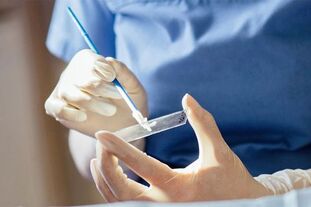
To diagnose HPV, they first consulted a doctor. According to the manifestation of the virus, he will refer the patient to a specialist in diagnostic research and stenosis (gynecologist, urologist, dermatologist, oncologist, rectal cancer specialist, etc. ).
Both men and women can take the test, for example:
- ELISA blood test-According to the results, the virus concentration and carcinogenicity cannot be determined, but its antibodies can be detected. This method is ideal for early diagnosis of symptoms that have not yet appeared.
- PCR diagnostic program-enables you to detect HPV DNA, that is, it allows you to accurately know whether there is a virus in your body; analyze blood, saliva, genital secretions, etc.
- Digene-test-Enables you to assess the degree of carcinogenicity of the strain to determine the amount of virus in the body; the biological material is a piece of tissue scraped from the cervical canal, vagina or urethra.
The following inspection types are prescribed for women:
- Cytological examination (PAP test)-examination of vaginal smears under a microscope to identify cells changed by the virus.
- Colposcopy-Use colposcopy equipment to examine the cervix. If cell changes are found based on the results of the cytology examination, this procedure is prescribed to the patient.
Treatment
There is no specific treatment for HPV (that is, aimed at destroying it). However, you can take measures to inhibit the activity of the virus and increase the possibility of self-repair. Prescribe patients:
- Vitamins.
- Immunomodulator.
- Antiviral drugs.
Symptomatic treatment-removal of tumors. Under no circumstances should you try folk remedies to treat conjunctivitis, papilloma and warts. There is a risk of secondary infection or degeneration of benign tumors into malignant tumors.
The following methods are used to eliminate tumors:
- Resection with a scalpel.
- Freeze molding (freeze with liquid nitrogen).
- Remove it with a wireless knife.
- Laser removal.
- Electrocoagulation.
The doctor chooses the method according to the nature and location of the tumor and the state of the patient's body.
Prevention
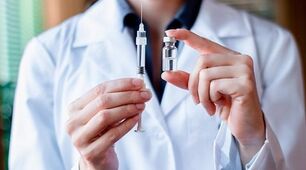
Prevention methods include maintaining a healthy lifestyle, and regularly strengthening immunity through adequate and varied diet, moderate physical exercise and quality rest. It is important to follow personal hygiene rules and not use other people's accessories. To avoid the risk of infection, you should avoid casual sex and use barrier contraception.
It is now possible to vaccinate against certain highly carcinogenic HPV strains. It is recommended to vaccinate between 9 to 26 years old (the best age is 11-12 years old). Women can be vaccinated after 26 years, but only if the gynecologist believes that there is evidence. It should be borne in mind that vaccination cannot cure the virus that already exists in the body, but it can prevent infection of some particularly dangerous viruses.























